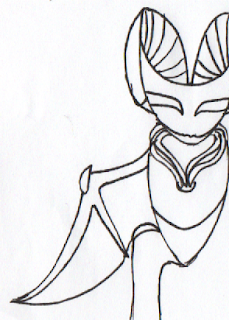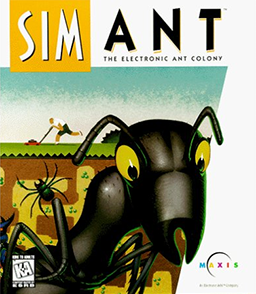After posting the Survey Monkey embed on my blog, I received two more completed surveys. With 27 surveys completed I feel analysing the results to learn about my target audience is the best option as the number of completed surveys is enough to give me significant insight into the target audience of the game I will be designing and marketing.
Below are the results to my survey and some conclusions that can be made by looking at them.
My first question, 'What is your gender?' was answered with an almost 50/50 split between the two sexes. This indicates that my target audience, the people I should be aiming my game at, are not of a particular gender. I should try and reflect this in my game by not aiming it too much at males (using Mulveys ‘Male Gaze’ or making it too action and fighting orientated) or at females (Making it too stereotypically pink and fluffy). It is a well known fact that the large majority of gamers are male, with most games (series like Call of Duty, Just Cause or Battlefield) aimed at a male audience. Even players of games such as Pokemon, Spyro, Mario and other supposedly ‘gender neutral’ games have a majority male player base.
I think the reason for this majorly male dominated industry is because game developers do not know what girls want from a game. Most females are not interested in the war games that males tend to go for, but most do not want overly stereotyped games, such as the ‘imagine’ series either. Many potential female gamers are put off gaming due to this.
Game developers are more likely to aim their games at males as it is much less risky and more predictable for them. Call of Duty Modern Warfare 3 is a prime example of this, it is set to be released early November and can guarantee a sale of millions within the first day. The Call of Duty series is well known by male gamers and although the game play in each game doesn’t differ much, they have become a huge hit with teenage guys worldwide.
In recent years, game developers are trying to reach out more to female audiences; games such as Fable are including a female character option, allowing girls to get more involved within the games and hopefully evening out the numbers in the future.
Making my game relative to both females and males is something I would like to concentrate on when planning my game; this will keep it relevant to my target audiences.
My second question was ‘What is your age category’, it can clearly be seen by the results that all but two of the gamers answering this questionnaire were under 24 years of age.
I had predicted this result because under 24 year olds are more likely to have free time on their hands than any other age group. I will need to make sure that the contents within my game will not cause it to go above a 16 ESRB rating to keep it relative to my target audience, I think a 3+ or 7+ rating for my game would be the most relevant, making it playable by all age groups and keeping violence, sexual themes and bad language to a minimum.
Stanley Halls ‘storm and stress’ model can be applied here. Hall said that adolescence is a time of storm and stress, when all young people go through some degree of emotional and behavioural upheaval, before establishing a more stable equilibrium in adulthood. He stated that depression is a common mood in teens and suggested that criminal activity would increase between the ages of 12 and 24. He talked about heightened sensation seeking, stating ‘youth must have excitement and if this be not at hand in the form of moral and intellectual enthusiasms it is more prone to be sought in sex or drink’
This links well with my survey results; many popular games on the market today are violent and involve crime of some sort. Games such as these are popular with youths possibly because of Stanley Halls theory; they are exciting and thrilling therefore youth seek them as a sensation.
Moral panics about video games increasing aggression and crime rates is something I will be further researching, in relation to Halls theory of adolescence.
My third question was about social grades, linking to the theories I had discussed in a previous blog post. The majority of gamers that took my survey fitted into category E (Students, Pensioners or the unemployed) this was also to be expected, due to these people having the most free time on their hands.

My forth question was set to find out which social value groups my audience would most likely fit into. I had previously predicted that ‘Self Actualisers’ and ‘Disconnected’ would be the majority, this was not the case, with ‘Strivers’ and ‘Self Actualisers’ coming out top. I think the reason for this would be because, Strivers are looking for acceptance and when playing multiplayer games and being in a group like that, acceptance would be important for a player. ‘Self Actualisers’ was one of the value groups I predicted would come out highly in my questionnaire, this was the highest answer and I feel this is probably because when playing a game, exploring is often a big part, so gamers are more likely to be people who explore change enthusiastically rather than someone that would rather stick to their comfort zones.

Question five showed that the overwhelming majority of people taking my questionnaire played games at least once a day or every few days, this makes the results of my questionnaire relevant and shows I am appealing to the right target audience, under 24 year old gamers.
My sixth question shows that the majority of the gamers I questioned played games for entertainment, second to escapism. None of these people played games to ‘fit in’, only a couple played for stress relief and one played for Thrill and Excitement. This goes against my explanation, using Stanley Halls theory, on why young people play games. I will need to apply these results to my final product, making it as entertaining to my audience as possible.
When asked what their favourite genre of video game was, most chose platformer, with adventure coming in close second. I will be doing more research into genres on a future blog post, but I feel it would be best to create a platformer or adventure style game, in keeping with what my audience want.
The majority of people that took my survey were PC gamers with 12 out of 27 choosing that option. Nintendo DS was the second most popular console with 6 people choosing it. From this, I can conclude that the majority of my target audience would prefer my game to be made for the PC, this will be something I will need to think about when it comes to planning and designing my final products.
A large amount of people that took my survey never bought gaming magazines. A gaming magazine would be where my advertisement is most likely to be shown, but despite a lot of people not buying them, a significant amount still bought them once a month, on occasion or rarely, meaning it would still be viable to create the advertisement with a gaming magazine in mind.
Finally, my last question asked whether people paid attention to gaming magazine and TV advertisements came out with a high majority yes, meaning that advertising in these ways would help get my game known by my audiences.
Overall, I feel my Survey Monkey has been a valuable resource when finding out what my target audience is and will hopefully help me better adhere to these people when designing and creating my final piece.
Next I will be conducting some research into already existing, iconic video game characters and do a little research into genre and what conventions I will need to be following when creating a game of a particular genre.






.jpg)






































